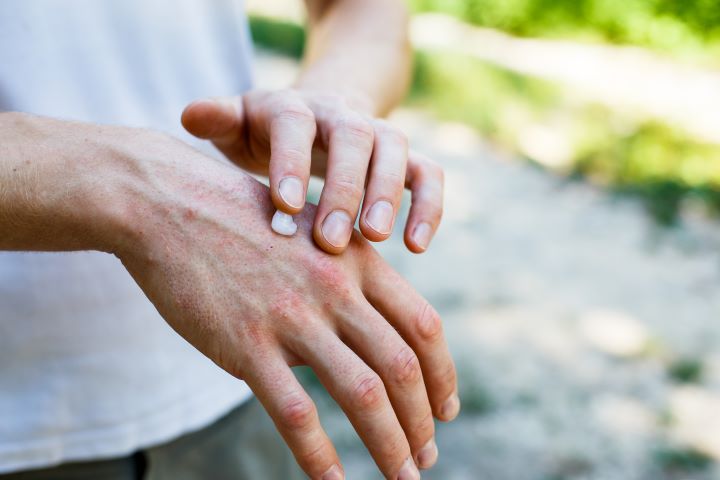Managing Dermatitis: Causes, Diagnosis & Treatments
Dermatitis affects many people and causes itchy, inflamed skin that can disrupt daily life. This guide explains common types of dermatitis, how doctors diagnose them, medical and at-home treatment options, and practical prevention tips. Learn actionable steps to reduce flare-ups and improve skin health with evidence-based approaches and simple self-care strategies.

Dermatitis describes a group of inflammatory skin conditions that cause redness, itching, and discomfort. While different forms share overlapping symptoms, identifying the precise subtype is key to effective care. Below is a clear overview of common types, diagnostic methods, medical treatments, home strategies, and prevention measures to help you manage dermatitis more successfully.
Common types of dermatitis
-
Contact dermatitis: This occurs when skin reacts to chemicals, plants, or other substances it touches. There are two main subtypes: irritant contact dermatitis, caused by direct damage from harsh agents (soaps, solvents), and allergic contact dermatitis, an immune-mediated reaction to specific allergens (nickel, fragrances).
-
Seborrheic dermatitis: Marked by flaky, red patches often on the scalp, face, and upper chest, this form is linked to overactive oil glands and sometimes to the yeast Malassezia. It can cause dandruff and persistent redness in oily areas.
-
Nummular dermatitis: This presents as distinct, round or coin-shaped patches of inflamed, itchy skin, commonly appearing on the arms, legs, or torso. These lesions can be mistaken for fungal infections or psoriasis without careful evaluation.
Recognizing which form you have matters because treatment choices and preventive measures differ between types.
How dermatitis is diagnosed
Diagnosis relies on a combination of clinical assessment and, when necessary, tests:
-
Physical examination: A dermatologist inspects the distribution, appearance, and pattern of the rash to narrow down likely causes.
-
Medical history: Expect questions about symptom onset, occupational or hobby exposures, skincare products, family history of eczema or allergies, and factors that worsen or improve the rash.
-
Patch testing: For suspected allergic contact dermatitis, patch testing can reveal specific allergens responsible for the reaction.
-
Skin biopsy: In ambiguous cases, a small sample may be taken for microscopic analysis to exclude other skin disorders.
A precise diagnosis allows your clinician to tailor treatments and recommend strategies to reduce future flare-ups.
Medical treatments and professional options
Treatment aims to calm inflammation, control itching, and prevent repeated episodes. Options include:
-
Topical corticosteroids: Widely used first-line agents for many dermatitis types; they reduce inflammation and itching. Potency and duration are chosen based on location, severity, and patient age.
-
Calcineurin inhibitors: Topical drugs such as tacrolimus or pimecrolimus are alternatives for sensitive areas or longer-term use to avoid steroid-related side effects.
-
Antihistamines: Oral antihistamines can help control itch, particularly when allergies are involved or when itching disrupts sleep.
-
Phototherapy: Supervised ultraviolet light therapy may be effective for chronic or widespread dermatitis, especially atopic dermatitis, when topical treatments are insufficient.
-
Systemic medications: For severe, refractory cases, short courses of oral corticosteroids or other immunosuppressive agents may be prescribed under close medical supervision.
Use all prescription medications as directed and discuss potential side effects and interactions with your healthcare provider.
Self-care measures that help
Daily habits can make a major difference in symptom control and skin recovery:
-
Moisturize frequently: Apply a fragrance-free, emollient moisturizer immediately after bathing and throughout the day to seal in moisture and restore the skin barrier.
-
Identify and avoid triggers: Track products, foods, fabrics, and environmental exposures that coincide with flare-ups. Eliminating or minimizing contact with known triggers reduces recurrence.
-
Choose gentle products: Use mild, hypoallergenic cleansers and detergents. Avoid fragranced or harsh ingredients that strip natural oils.
-
Stress management: Psychological stress can provoke or worsen dermatitis. Techniques such as mindfulness, exercise, and adequate sleep are helpful adjuncts.
-
Diet and hydration: While evidence is mixed, some people notice benefit from dietary adjustments; staying well-hydrated and discussing possible food sensitivities with a clinician can be useful.
-
Wet wrap therapy: In more severe flare-ups, applying moisturizer and then wrapping the area with a damp cloth can enhance hydration and topical medication absorption.
Consistency with these practices complements medical therapy and supports long-term skin health.
Preventing flare-ups
Proactive steps reduce the frequency and seriousness of episodes:
-
Maintain a routine: Regular application of emollients and adherence to prescribed treatments helps keep skin stable.
-
Protective clothing: Wear gloves or long sleeves when handling irritants or working with water and chemicals.
-
Control indoor humidity: Use a humidifier in dry seasons to prevent excessive skin drying.
-
Pick the right fabrics: Choose soft, breathable textiles (like cotton) and avoid rough wool or synthetic fibers that can irritate sensitive skin.
-
Stay hydrated and check-ins: Drink enough water and schedule follow-up appointments with your dermatologist for monitoring and treatment adjustments.
| Treatment type | Typical use | Estimated cost range (USD) |
|---|---|---|
| Topical corticosteroids | Short- to medium-term flare control | $10–$60 per prescription |
| Prescription calcineurin inhibitors | Sensitive areas or steroid-sparing therapy | $50–$200 per prescription |
| Phototherapy (clinic-based) | Moderate to severe, chronic cases | $50–$150 per session |
| Systemic medications | Severe, refractory disease | Varies widely; $100–$1000+ depending on drug |
Costs vary by provider, location, insurance coverage, and treatment plan. Contact your healthcare provider or insurer for precise pricing information.
Dermatitis management blends accurate diagnosis, appropriate medical treatment, and consistent self-care. While many cases respond well to topical therapies and lifestyle changes, more persistent or severe forms may require phototherapy or systemic medications. Work closely with your dermatologist to identify triggers, choose safe long-term strategies, and adjust treatments as needed.
This article is for informational purposes only and should not be considered medical advice. Please consult a qualified healthcare professional for personalized guidance and treatment.






